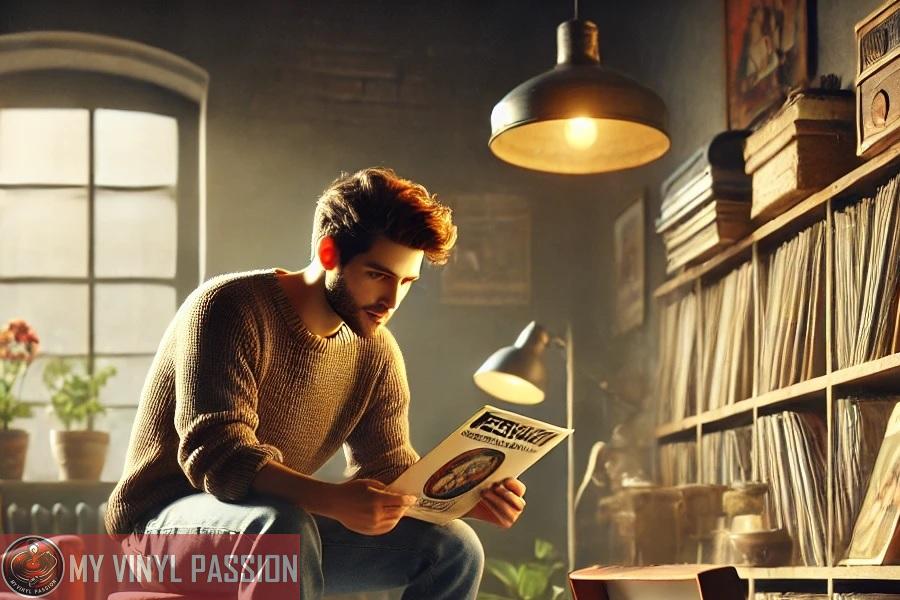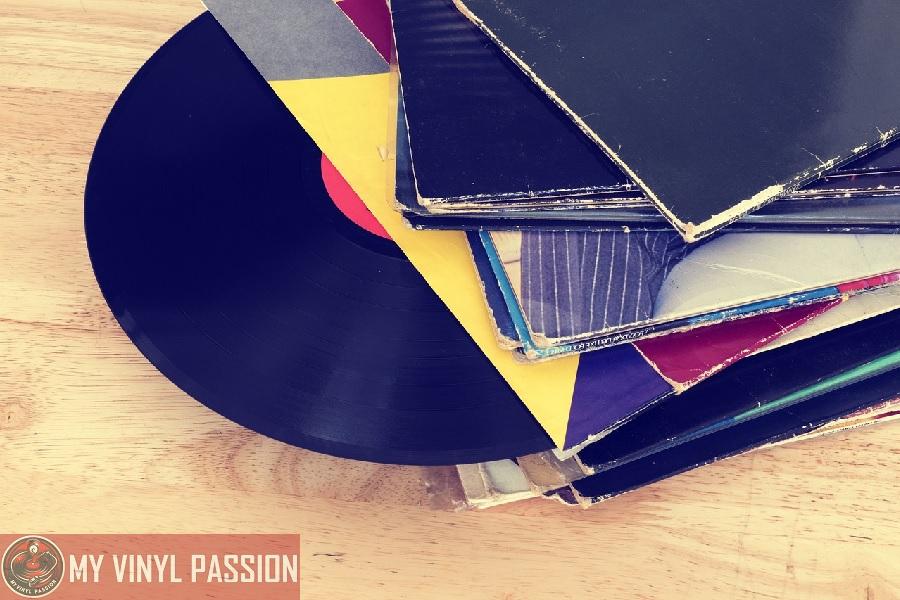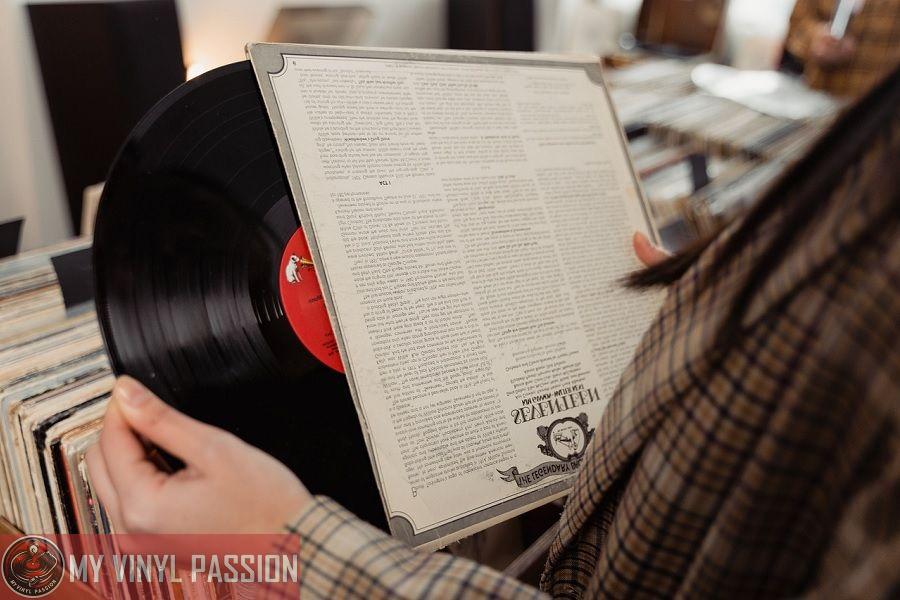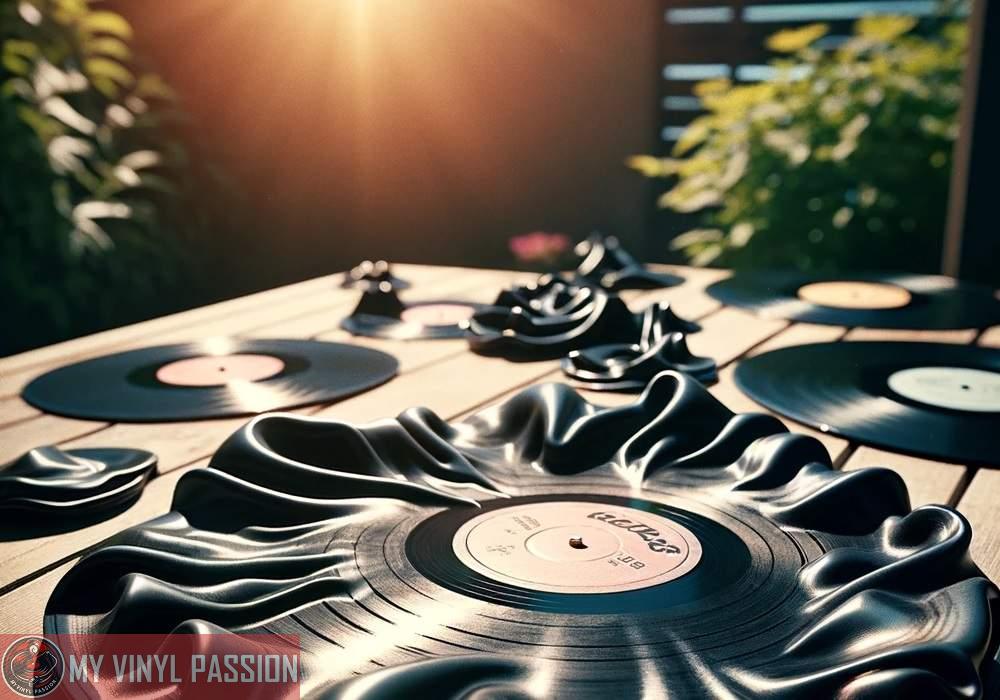This analog format, with its distinctive warmth and depth, provides a listening experience that many argue is unparalleled, especially when it comes to classic rock albums.
As an audiophile, you know that the textures and layers of guitar riffs, pounding drums, and iconic vocals are something to be savored, and vinyl might just be the best way to do that.
In Summary
Classic rock albums on vinyl capture the nuances of guitar riffs, drum beats, and vocals, providing a rich and immersive sound.
“The Dark Side of the Moon” by Pink Floyd: Iconic concept album known for its immersive soundscapes and philosophical themes.
“Led Zeppelin IV” by Led Zeppelin: Featuring timeless hits like “Stairway to Heaven,” this album showcases the band’s versatility and musical prowess.
“Abbey Road” by The Beatles: A masterclass in songwriting and production, this album is celebrated for its innovative arrangements and memorable melodies.
Classic rock holds a revered place in the pantheon of music genres, with albums that have stood the test of time, influencing generations of music lovers and makers alike.
Icons of the ‘60s, ‘70s, and ‘80s crafted records that not only shaped the landscape of contemporary music but also pushed the boundaries of what could be achieved through analog recording techniques.
When you place the needle on a classic rock album on vinyl, you’re not just listening to music; you’re immersing yourself in a piece of musical artistry.
For those who appreciate the full-bodied sound of a vinyl record, the experience of listening to a classic rock album is particularly special. The analog format captures the nuances of the recording in a way that many audiophiles believe is lost in digital formats.
The albums that defined the classic rock era come to life on vinyl, offering a dynamic range that can fill the room and transport you back in time.
Whether it’s the electric energy of a guitar solo or the soul-stirring impact of a live recording, these top classic rock albums are a testament to the enduring legacy of vinyl.
The Importance of Vinyl in Preserving Classic Rock
Classic rock has a rich heritage that’s kept alive through the warmth and authenticity of vinyl records. As an audiophile, you understand that vinyl plays a critical role in preserving the history and artistry of this genre.
When you place a needle on a turntable, you’re not just playing music; you’re experiencing a high-fidelity connection to the past. The grooves on vinyl records hold the nuances of classic rock that digital formats often overlook.
This includes the subtle imperfections that were part of the recording process, adding a layer of depth and realism to the music.
Vinyl is more than just a medium; it’s a musical artifact that embodies the era it came from:
- Sound Quality: A well-maintained vinyl on a hi-fi system can reproduce the sound as the artists intended, with a richness and depth that you can almost feel.
- Tangible History: Handling vinyl records connects you to music history, reminding you of the physicality of music in a pre-digital age.
- Artwork and Liner Notes: The large format of record sleeves showcases album art and liner notes, providing a visual and informational complement to your listening experience.
Remember, maintaining your vinyl and turntable is essential to ensure the longevity of your collection and the integrity of sound:
- Clean your records and needle regularly.
- Store your records vertically and in a cool, dry place.
- Invest in a quality turntable that treats your vinyl with care.
By cherishing your classic rock vinyl albums, you’re not just enjoying music; you’re helping to preserve a form of art that continues to resonate with generation after generation.
Decoding the Audiophile Appeal: Sound Quality and Experience
When you immerse yourself in the audiophile universe, you’ll notice a keen emphasis on sound quality. Audiophiles seek the finest hi-fi audio systems, often favoring vinyl records for their rich, warm sound profile.
Why Vinyl?
- Vinyl records provide a high resolution counterpart to digital formats.
- Your experience is imbued with a sense of authenticity; you hear music as it was intended by the artists.
Hi-Fi Systems
- Essential in rendering a detailed soundstage that audiophiles cherish.
- A hi-fi stereo setup allows for an accurate stereo image, better reflecting the original recording’s positioning and movement of instruments.
Mono vs. Stereo
- Mono recordings consolidate audio into a single channel—clear and focused.
- Stereo recordings offer you a more spatial and immersive experience, with sound coming from multiple directions.
Headphones vs. Speakers
- Headphones can offer a personal high-fidelity experience, delivering details that speakers might miss.
- Choosing the right headphones is crucial, as they must reveal the low and high frequencies with equal clarity.
Your journey to become an audiophile isn’t just about collecting gear or records; it’s about crafting experiences that resonate with your very sense of self.
It’s the art of active listening, where you tune into nuances and subtleties in music that might otherwise go unnoticed. Whether through headphones or a stereo system, each listening session is personal and profound.
A Walk Through Legendary Albums and Artists
In this journey through iconic sounds, you’ll revisit records that redefined the landscape of rock and penetrated the soul of audiophilia. Spanning the innovation of the ’60s to the raw edge of the ’90s, these albums are cornerstones of classic rock history.
Trailblazers of Rock: The Beatles to Led Zeppelin
Discover the genesis of rock with albums like The Beatles’ “Abbey Road” and “Sgt. Pepper’s Lonely Hearts Club Band.” These definitive works showcase the Beatles’ revolutionary impact on music and the art of the concept album.
Moving from their distinct harmonies to the heavy guitar riffs of Led Zeppelin, “Led Zeppelin IV” stands as a monument in rock history, featuring timeless tracks such as “Stairway to Heaven.”
Evolving Rock: From Pink Floyd to Nirvana
The auditory landscape morphed further with Pink Floyd’s “Dark Side of the Moon,” an album that’s a quintessential audiophile experience with its rich, complex soundscapes.
As rock continued to evolve, Nirvana’s “Nevermind” delivered a seismic shift, channeling raw emotion into grunge and leaving a profound mark on rock’s timeline.
Innovative Artistry: Queen and Rush
Pushing the bounds of creativity, Queen’s albums burst with eclectic styles, while their magnum opus, “A Night at the Opera,” includes the operatic rock suite “Bohemian Rhapsody.”
On the progressive side, Rush’s meticulous musicianship and technical prowess is immortalized in records like “Moving Pictures,” offering a blend of intricate compositions and philosophical lyrics.
Iconic Album Covers: Visual Art in Classic Rock
In classic rock, album covers are more than just packaging; they’re an essential part of the cultural experience. Artwork has always been integral to how you feel and interact with the music of your favorite classic rock albums.
Take, for example, Pink Floyd’s The Dark Side of the Moon. The prism and the rainbow are not merely images but symbols that have transcended time, etched into the collective consciousness of rock culture.
The visual allure of classic rock extends to remarkable sleeves like the Rolling Stones’ Sticky Fingers, which features the provocative zipper design conceived by Andy Warhol.
It’s a tactile experience that enhances the auditory one, encouraging you to engage with the album as a complete piece of art.
Your journey through classic rock is incomplete without a mention of The Beatles’ Abbey Road. The iconic zebra crossing cover is simple, yet it has become one of the most recognizable images worldwide, highlighting how effective a powerful cover can be.
Furthermore, the splash of colors and the imaginative ensemble found on Sgt. Pepper’s Lonely Hearts Club Band is a testament to the era’s experimental spirit. It proves that an album cover can be as boundless as the music it protects.
- Iconic Album Covers:
- The Dark Side of the Moon – Symbolism meets simplicity.
- Sticky Fingers – Tactile and provocative.
- Abbey Road – The epitome of timeless imagery.
- Sgt. Pepper’s Lonely Hearts Club Band – A kaleidoscope of the 60s culture.
These covers are not only protective sleeves; they are historical bookmarks, capturing the essence of an era when visual art and music were interwoven to create something truly spectacular.
Maintaining a Pristine Vinyl Collection
To ensure the longevity and quality of your classic rock vinyl records, proper care and handling are paramount. Maintaining a pristine collection involves a multi-faceted approach, from the moment you pick up a record to the regular cleaning routine.
Handling Your Vinyl
- Always hold a record by the edges or label. Fingerprints and oils can degrade the quality.
- Return records to their sleeves immediately after playing. This protects them from dust.
Cleaning and Storage
- Use a carbon fiber brush before and after each use. This removes surface dust.
- Clean records periodically with a record cleaning solution and a soft, lint-free cloth.
- Store your vinyl vertically to prevent warping.
- Keep records in a cool, dry place away from direct sunlight.
Turntable and Needle Care
- Ensure your needle is clean and replace it as recommended. A dirty or worn needle can damage your records.
- Use a calibrated tonearm and properly balanced turntable to avoid unnecessary pressure on the grooves.
Hi-Fi System
- A well-maintained hi-fi system enhances sound quality. Regularly dust your equipment and check for any necessary updates or repairs.
Respect the Liner Notes and Sleeves
- Handle liner notes and sleeves with care. These elements are integral to the collector’s value and enrich your experience with artist insights and artwork.
Regular Inspection
- Regularly inspect your collection for signs of mold or other damage, taking immediate steps to address any issues.
Remember, an ounce of prevention is worth a pound of cure. Protecting your vinyl records ensures you’ll enjoy the high-fidelity sound of your classic rock albums for years to come.
Check also: Beginner’s Guide to Starting a Vinyl Record Collection




